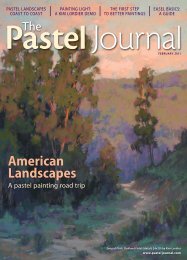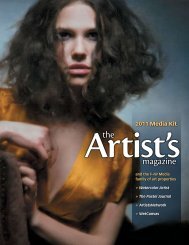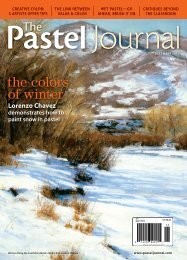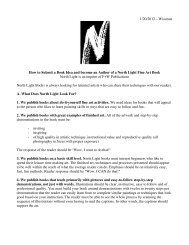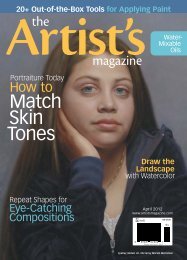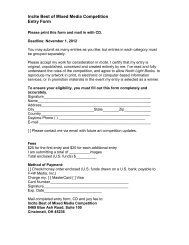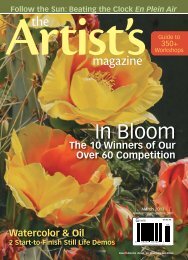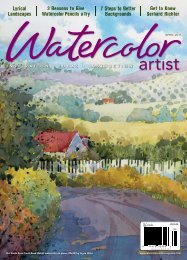Drawing Basics The Landscape And Figure - Artist's Network
Drawing Basics The Landscape And Figure - Artist's Network
Drawing Basics The Landscape And Figure - Artist's Network
Create successful ePaper yourself
Turn your PDF publications into a flip-book with our unique Google optimized e-Paper software.
your image will be. Avoid focusing on the contour oredge of your cast. Work from the inside to the outside.• Observe how the lines are organized, using a plumbline to determine what forms stack over one another.How do width and height relate to one another?• Imagine that the rib cage and pelvis are boxes. Try topicture how they would be tipped in space.3Adding light and shadow. Your goal in this step isto establish major divisions between the light andthe shadow shapes. Ask yourself: Are the shadow shapesas concise and specific as possible?• When the drawing is as accurate as you can make it byusing just line, you can begin to block in the shadowshapes. In this stage, as you begin to compare shapes,it’s important to squint so that you focus only on largeareas of value.• Focus on the major division between the light and theshadow. This is often called the core shadow; it’s a darkedge located in the halftone areas between the body ofthe light and the body of the shadow.• Imagine your shadow shapes as being a landmass ona map, with the coastline of the shadow shape as an irregularyet very specific contour.GET ACCESSto hundreds of the newestand best art books and videos atwww.NorthLightBookClub.comYou’ll Find…• Selections carefully made by our staffof experts just for you• Special savings of up to 65%• Savings of 15-20% off publishers’ listprices every dayGo to www.NorthLightBookClub.comto join! Members also enjoy…• FREE shipping on prepaid orders• A FREE subscription to North Light magazine• Discounts on <strong>The</strong> Artist’s Magazine andWatercolor Magic subscriptions• <strong>And</strong> much, much more!If you’re already a member of the club, you can nowmanage your membership online! Check it out today!www.NorthLightBookClub.com!3 44Making corrections. Here, your goal is to tone theshadows and reassess the accuracy of gesture andproportion. Ask yourself: Is there any way to make thisdrawing more unified and dynamic before moving on?By now, enough information is established in the drawingto determine how accurate it is compared to the actualcast. Based on the new information revealed by yourlightly blocking in the shadows, you can now make around of smaller drawing corrections. Try looking atshapes rather than just line.When you’ve found and corrected the most obviousdrawing inaccuracies, begin placing your lines and valuesmore confidently by starting to work darker. Keepyour marks uniform and build up the tones gradually soyour drawing will be easy to read and easy to correct.Demonstration continued on the next page.June 2004 <strong>The</strong> Artist’s Magazine 53Easel-ly the BestFor More Info Call TollFree: 877.765.8356 or307.733.6450www.soltekarts.comVersatility? You Get It!You also get: Function, Sturdiness, Ample Storage, Quality,Wind Resistance, Compact, Easy 20 Second Set-up, etc.Now also available intaller “Pro” versionsize:12.5 x 2.6 x 19.75weight: only 9 poundscanvas: max 30” high



